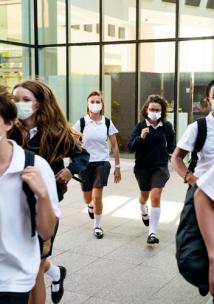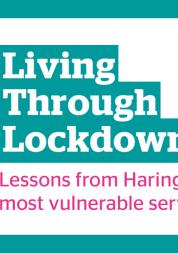Young People and Mental Health: The Impact of COVID-19 and Lockdowns in Haringey - Phase 2

Young people were heavily impacted by COVID-19 and the subsequent lockdowns from 2020 to 2022, experiencing disruptions to schooling and education, uncertainty over exams and results, reduced employment prospects, not being able to socialise with friends and family, and having to stay in. This impacted on young people’s mental health and wellbeing, with increased levels of stress, anxiety and mental ill health.
We explored these issues by carrying out a project looking at the impact of COVID-19 and lockdowns on the mental health and wellbeing of young people in Haringey.
During 2022 we followed up our first report, which was based solely on online surveys with young people, parents and carers, with qualitative research.
We ran four small focus groups at Haringey Sixth Form College, two in March 2022 and two in December 2022, with their health and social care students, young people aged between 16 and 18 years. Overall, we spoke to 21 young people over the four focus groups.
We explored the key themes and issues identified in our first report in more depth, and this qualitative research, based on in-person focus groups, gave us a more in-depth and richer insight into young people’s experiences during this time.
Perceptions of mental health
The term mental health had mainly negative connotations for young people, and it was strongly associated with mental ill health and illness e.g. stress, anxiety, depression.
COVID-19 and lockdowns: Challenges and benefits
Living through COVID-19 and lockdowns had meant a lot of lifestyle changes for young people, and there were positive and negative aspects to this.
The worst aspects of this time for young people was being unable to leave the house, being stuck inside all the time, and not being able to see friends and family. This had led to a lot of young people experiencing stress, anxiety, depression, and a lack
of motivation.
But young people were also able to identify and talk about positive aspects of this time. They really valued and appreciated the extra time they got to spend with their immediate family, and felt they built stronger bonds as they were spending much more time with them.
Social media was both a force for good and bad during this time. On the one hand, it enabled young people to keep in touch with friends and family, making them feel more connected, and less alone and isolated. On the other hand, young people often felt bad after looking at social media, comparing themselves unfavourably to others apparently living their best lives.
Recommendations
We recommend schools and colleges consider having the following measures in place:
- More of a focus on mental health within the core curriculum, raising awareness, challenging stigma, and signposting to mental health organisations and services which can support young people to have good mental health. This could be done through mental health classes/workshops.
- A safe space (quiet room/rage room) within the school/college, a place where young people can go to relax and calm down – somewhere to have time out when needed.
- A referral process, and access to, professional mental health services e.g. talking therapists and counsellors.
- Drop-in sessions/clinics/appointments with mental health services within their school/college, so students can access these services quickly and easily.
We recommend mental health services, CAMHS*, charities and organisations:
-
Work in partnership with schools and colleges so students are readily able to access these services quickly and easily through a school/college referral.
-
Consider setting up drop-in sessions/clinics/appointments within school and college settings, so students can access services quickly and easily.
-
Develop tailored communications, designed for young people, about their services, setting out what services are available and how to access them. This should be available online and in hard copy (leaflets, posters).
-
Ensure these young people friendly communications are widely promoted and distributed at schools, colleges, youth centres, community centres, places of worship; and to young people, parents, carers, teachers, social workers, youth workers, priests, Imams etc
*CAMHS (Child and Adolescent Mental Health Services)

